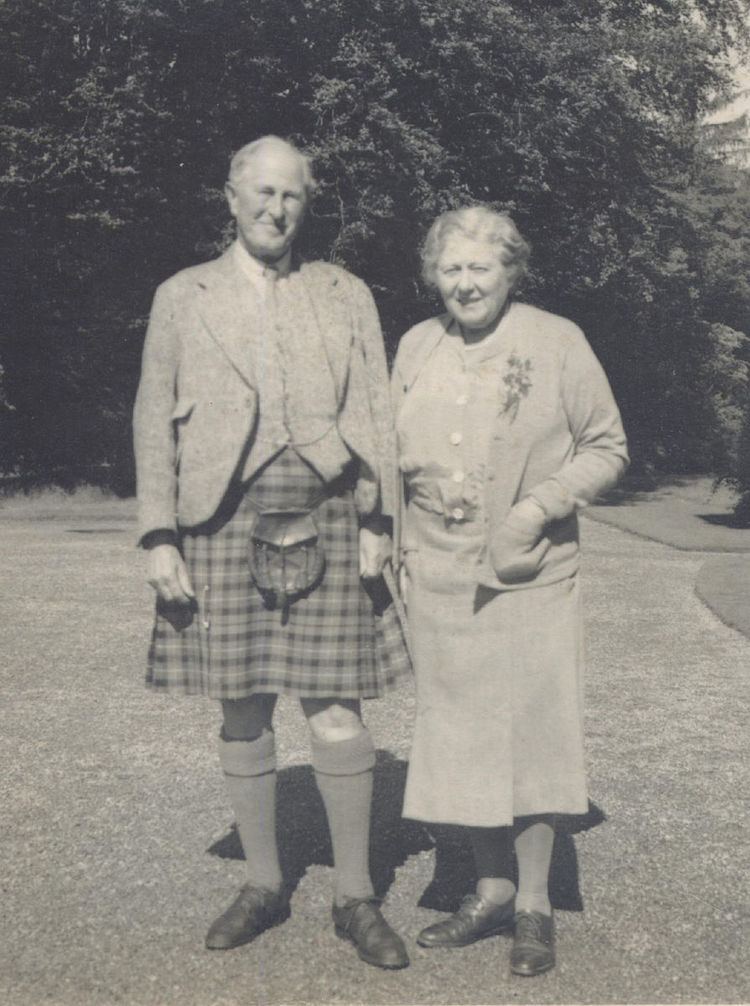Full Name James Graham Profession Engineer Resting place Stirling | Nationality Scottish Name James 6th Coronation date 1925 | |
 | ||
Born 1 May 1878London, England, UK ( 1878-05-01 ) Occupation Politician, Naval officer Died January 20, 1954, Buchanan Castle, United Kingdom | ||
James Graham, 6th Duke of Montrose KT CB CVO VD (1 May 1878 – 20 January 1954), was a Scottish nobleman, naval officer, politician and engineer.
The eldest son of Douglas Graham, 5th Duke of Montrose, he was educated at Eton College. In 1906 he married Lady Mary Douglas-Hamilton, the only child of the 12th Duke of Hamilton. They had four children, Lord James Graham (later the 7th Duke), Lady Mary Graham, Lord Ronald Graham and Lady Jean Graham.
As a mariner, he served in the Mercantile Marine and ASC in South Africa, during which time he obtained the first film ever taken of a total eclipse of the Sun during a Royal Astronomical Society expedition to India in 1899, and took part in a mission in 1900 for Lloyd's of London to the South African Government to establish wireless telegraphic stations on the coast. Having been instrumental in founding the Royal Navy Volunteer Reserve (RNVR) in 1903, he served in the Auxiliary Naval Service during World War I and was later Commodore of the RNVR Clyde Division, then the East Coast of Scotland RNVR, and fulfilled the role of Commodore of the entire RNVR from 1921 until he retired in 1927. As a result, from 1946 to 1968, whichever ship was attached to the Tay Division of the Royal Naval Reserve (in Dundee) was always temporarily renamed HMS Montrose after the 6th Duke. In 1992, the seventh Duke-class frigate HMS Montrose was so-named for the same reason.
In his political life, he was unpaid Assistant Private Secretary to the Chancellor of the Exchequer in 1905, and Naval Aide-de-Camp to His Majesty. However, he was unsuccessful as the Scottish Unionist Party (effectively the Conservative Party in Scotland) parliamentary candidate for Stirlingshire in 1906, and as the Conservative Party candidate at the 1906 by-election at Eye, Suffolk, and at the subsequent general election in 1910; although holding the courtesy title of the Marquess of Graham from 1907 (when his father was the 5th Duke), he contested these elections as James Graham. He entered the House of Lords as the 6th Duke when he succeeded to the title in 1925. When the Home Rule movement decided to split from the avowedly anti-Home Rule Scottish Unionist Party in 1932, he became chairman of the new centre-right Scottish Party, and successfully steered it towards a merger with the centre-left National Party of Scotland in April 1934, therefore founding the modern Scottish National Party. He joined the Liberal Party in 1936.
As an engineer, he was the inventor of the world's first naval aircraft carrier, when in 1912, as a director of William Beardmore and Company, of Dalmuir, he designed a 14,450 ton merchant vessel intended for delivery to the Lloyd Sabaudo Line of Italy as the SS Conte Rosso. When war broke out in 1914, work on the vessel ceased, but was resumed in 1916 as an aircraft carrier. The conversion work was completed in September 1918 and the vessel was commissioned as HMS Argus - recognised as the first ever "flat top". The Duke was also designer and owner of the first seagoing heavy oil motorship.
He was President of the British Institution of Marine Engineers in 1911, and President of the Junior Institution of Engineers in 1916 and 1917. Afterwards, he was Vice-President of the Institution of Naval Architects, a Younger Brother of Trinity House, a Trustee for the Honourable Company of Master Mariners, a Member of the Royal Company of Archers, and Commodore of the Sea Cadets in Scotland. In 1935 he became the second President on the National Institute for the Deaf, a post he held until his death.
Honours
He was Lord Lieutenant of Buteshire from 1920 until 1953 and was Lord High Commissioner to the General Assembly of the Church of Scotland in 1942 and 1943. He was appointed a Commander of the Royal Victorian Order in 1905, a Companion of the Bath in 1911 and a Knight of the Thistle in 1947.
